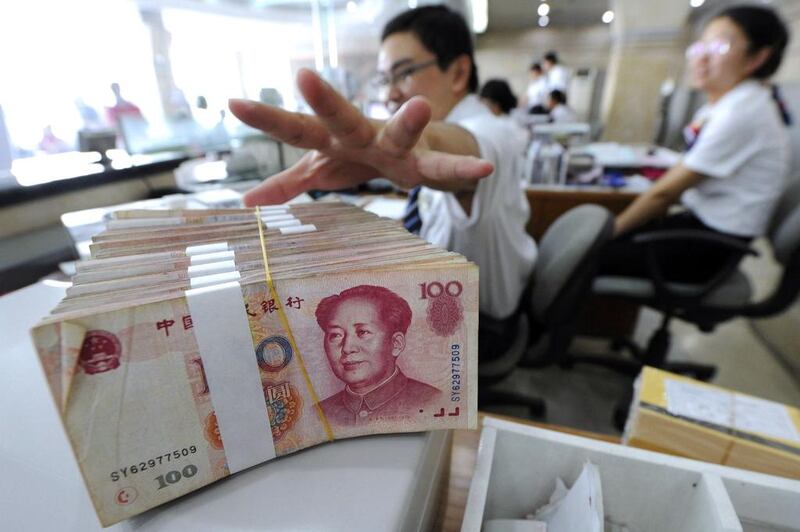China’s currency has touched record highs against the US dollar in recent weeks, reinforcing the need for the UAE to build a case for becoming a global trading centre for the yuan, say economists.
The yuan hit a peak of 6.08 to the dollar on October 25, capping a burst in strength as China's central bank loosens the reins on the currency. On Friday, it was trading at 6.1, bringing the rise against the dollar to 2.24 per cent since the start of the year.
A stronger yuan signals Beijing may be ready to take further steps to internationalise the currency.
The currency’s lift has also coincided with China signing agreements with the United Kingdom and Singapore in recent weeks to allow investors from those countries to invest in its domestic markets more easily.
The UAE needs to join them in positioning itself as a trading centre, say analysts.
“There’s no doubt that Dubai or Abu Dhabi qualify as an offshore trading hub,” said Francisco Quintana, the chief economist of Asiya Investments, a Kuwait-based investment firm. “In the GCC there’s a savings surplus and the region needs to invest that somewhere.”
So far, efforts to build financial links between the UAE and China are in their infancy.
A US$5.5 billion currency swap deal was signed between the UAE Central Bank and its Chinese counterpart in January 2012. It is unknown whether that amount has yet been drawn down.
But the size of that amount is small compared to the $40.42bn in trade between the two countries last year, with the largest chunk of that in the form of oil flowing to China. Only about 4 per cent of that trade is settled in yuan rather than dollars.
Paying for more goods in yuan stands to help traders to hedge against foreign-exchange risks and costs. Building a bigger reserve of yuan in bank treasuries would help to save lenders up to 5 per cent in foreign exchange costs, estimates Mr Quintana.
One potential sticking point to the UAE’s efforts to become a yuan trading centre is the tiny pool of deposits weighted in the currency within the financial system. Emirates NBD in February announced the launch of Chinese currency accounts for businesses and individuals. But many banks have yet to follow suit.
Limits on the scale of investment in the Chinese market curbs the incentive for UAE banks, traders and investors to convert more cash to the yuan.
“The Chinese government has certain limits on what certain countries can buy,” said Giyas Gokkent, the chief economist of National Bank of Abu Dhabi. “Until there’s more flexibility on that issue I don’t think there will be broader shift to the renminbi [the yuan’s other name].”
Still, the Chinese government has offered encouraging signs in recent weeks.
Last week, Beijing signed an accord with Singapore, allowing investors from the latter to buy yuan-denominated securities. The week before, China had signed a similar deal with the UK. Both agreements are seen as a way of moving towards more direct trading between the yuan and the currencies of those countries.
They also may help to entice long-term foreign investment into China’s markets, dominated by domestic buyers.
Dubai International Financial Centre (DIFC) has been looking to establish a similar foothold in the yuan offshore trading market.
But Abu Dhabi’s plans to grow its own financial free zone meant a UAE-wide platform could make sense, said Mr Gokkent.
Global investor interest in the yuan has risen amid recent data pointing to renewed momentum in China’s economy. Its cause has also been helped by dollar weakness as the likelihood rises that America’s Federal Reserve will continue with its bond-buying scheme into next year.
Still, it is likely to be several decades at least before the currency can challenge the dollar’s hegemony as the preeminent reserve currency, say analysts.
The dollar made up 62 per cent of foreign exchange reserves in the second quarter of this year, according to IMF data. Chinese authorities would need to ease further convertibility of the yuan before it could begin to make an inroad into the dollar’s status.
tarnold@thenational.ae





